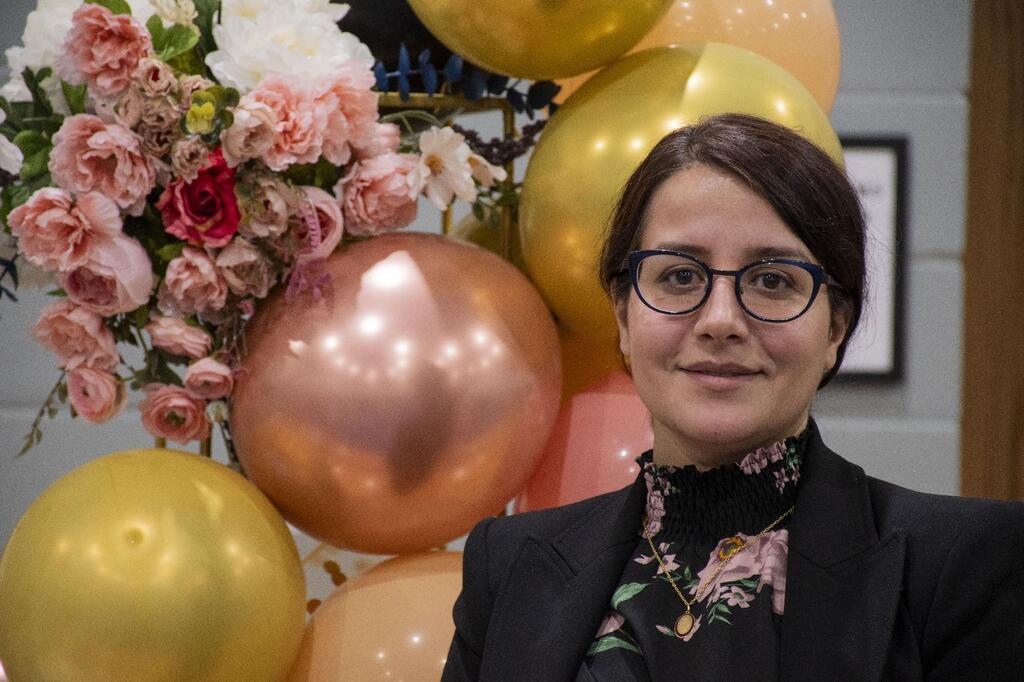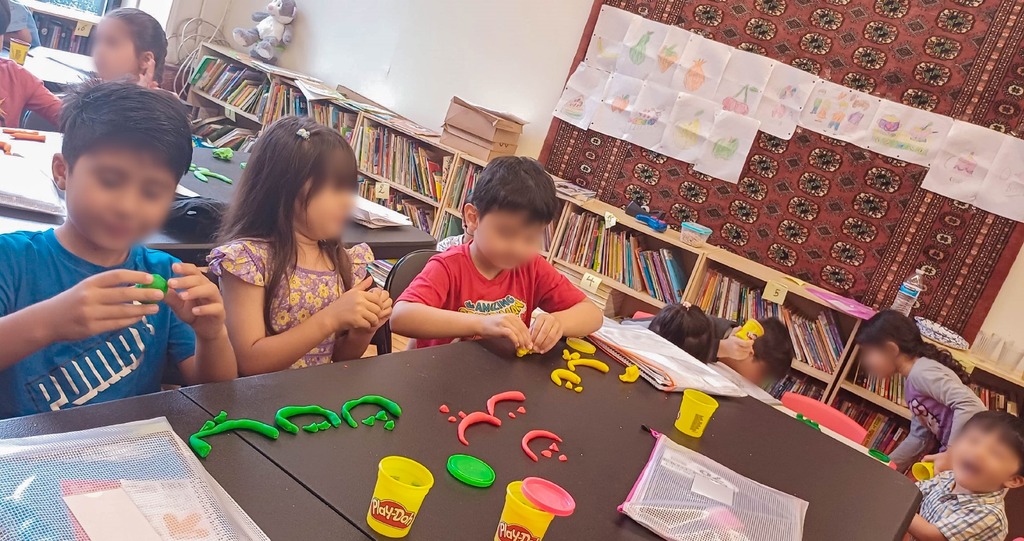Marjan Tabatabaei on working with Refugee Youth and Families.

How did you end up working in the field of Social Sciences?
I’ve always been curious about how societies work and how people relate to one another. As a teenager, I followed social issues through the news and was drawn to topics like culture, and human behavior. I first began studying law, but after a year, I realized my true passion was in understanding people, not just legal systems. So, I switched to social sciences, a decision that felt completely right. What truly strengthened my connection to this field was how it allowed me to listen to real stories, learn from people’s lives, and see the world through their eyes. Even in everyday life, I love observing and connecting with people, whether through conversations or just quietly watching the rhythm of a busy street. These moments remind me why I chose this path: because it’s not just about study, but about empathy, curiosity, and staying connected to the human side of the world around us.
What inspired you to work with children?
What really drew me to working with them is the idea that early support and guidance can truly shape a child’s future. I believe that when we listen to children, respect their thoughts, and help them feel safe and seen, we’re not just helping them, we’re also investing in a better society. Over time, I realized that being part of their growth and helping them build confidence, learn, and express themselves brings me a deep sense of joy and purpose.
I also believe that the world of children is completely different from that of adults, it follows its own rules. It’s pure, genuine, and free from judgment or politics. Children often see the world in ways we forget as we grow older, and sometimes, they challenge the rigid structures we’ve built around ourselves. Their fresh perspectives can open up new horizons. For me, working with children isn’t just a job, it’s a source of inspiration for life.
What are your main considerations when developing curriculum for the Dari and Pashto classes?
When developing a curriculum for Dari and Pashto classes, our primary focus is to help students maintain a strong connection with their native language and culture. Learning their language allows children to preserve a direct link to their roots, which is essential for their personal and social identity. The curriculum should create a classroom environment where Afghan culture is celebrated, allowing students to feel proud of their heritage and express themselves confidently.
Additionally, we consider the importance of family in the learning process. Some children come from families where parents, especially mothers, may not speak English. If children do not learn their heritage language, communication within the family can become difficult. By teaching Dari and Pashto, the curriculum helps strengthen family bonds and ensures effective communication within the home.
What strategies do you use to support children who may be struggling with the material?
Because our students are in mixed age groups, especially with many younger children, we use age appropriate and engaging methods to support them. For the younger ones, play, music, and movement are key tools. These activities help them focus and make learning feel more natural and fun. One activity they really enjoy is using playdough to form the letters of the Dari or Pashto alphabet; it turns a basic lesson into something creative and hands-on. We also use group songs and simple poems, which help them memorize new words and sentence patterns more easily. These interactive approaches make the material more accessible and help build their confidence in using the language.

Could you share some of your favorite moments from your classroom experience?
One of the moments that really stayed with me was during end of the term meetings when some mothers told us their younger children had started speaking more Dari or Pashto at home. They were happy to see their kids using the language naturally and even teaching words to their siblings. Some even asked us to run the classes again, which showed me the impact went beyond the classroom.
Also, I’ve really enjoyed seeing how much kids engage when we use songs, poems, or creative activities like shaping letters with playdough. Seeing their excitement and participation in these moments reminds me that learning doesn’t have to feel like a lesson, it can feel like play and still be deeply effective.
How does the language program incorporate mental health services and psychoeducation for children and how can children and families benefit from this?
Before answering the question, I would like to share a brief picture of the situation many refugees in our community face after moving to the United States. As we know, everyone faces challenges in life, and sometimes we need support from professionals to help us through difficult times. These challenges become even more intense when people move to a new country and culture. For many refugees, the journey comes with a deep sense of loss and a need to start over.
They are often cut off from their roots and placed in a completely new environment. Everything is different, rules, values, and cultural norms, and it can be overwhelming to adjust. Many of them were successful professionals in their home country. We have women who owned businesses across borders, university professors, doctors, and graduates. But here, many have to rebuild their lives from scratch.
On top of that, there is the language barrier, which makes it hard to find jobs, get services, or even communicate. They also lose the strong social connections and support they had in their home countries. Many left behind loved ones and feel isolated.
One of the most painful parts is that children often take on adult responsibilities because they learn the language faster and have to help their parents navigate the system. This role reversal can put a heavy emotional burden on the children and create stress in the family.
All of these challenges, loss, cultural differences, language barriers, isolation, and role changes, can seriously affect the mental health of both adults and children in refugee families. Based on this image, I am going to answer your question:
In our psychoeducational sessions, we aimed not only to raise awareness about mental health but also to support families through the real, day to day challenges they face, especially as refugees adjusting to a new life. For mothers, we created a safe, welcoming space where they could speak openly about their struggles, be heard without judgment, and connect with others facing similar experiences. These sessions often became a source of emotional relief and a place to build lasting friendships. In many cases, the bonds formed here extended beyond the sessions into family gatherings, helping to rebuild the sense of community they had lost.
For children and youth, we used art and play therapy as powerful tools to help them explore their emotions, build resilience, and learn important coping skills. Through these creative methods, they learned how to recognize and express their feelings, understand their problems, and manage stress in healthy ways. These sessions were designed to be culturally sensitive and familiar, helping children feel safe, valued, and understood.
The combination of emotional support, shared experiences, and culturally grounded approaches made the program truly meaningful. Participants not only gained knowledge and tools to manage their mental health, but they also found a sense of belonging and hope. They built a supportive network that continued to grow even after the sessions ended.
The impact of the program was clear in both the positive feedback from participants and their behavior. Many expressed a desire for more sessions, often staying behind to talk to the therapist or simply to spend more time with each other. These genuine moments showed that the program met a deep emotional and social need. It gave families a space where they felt safe, connected, and empowered to move forward with strength and confidence.
